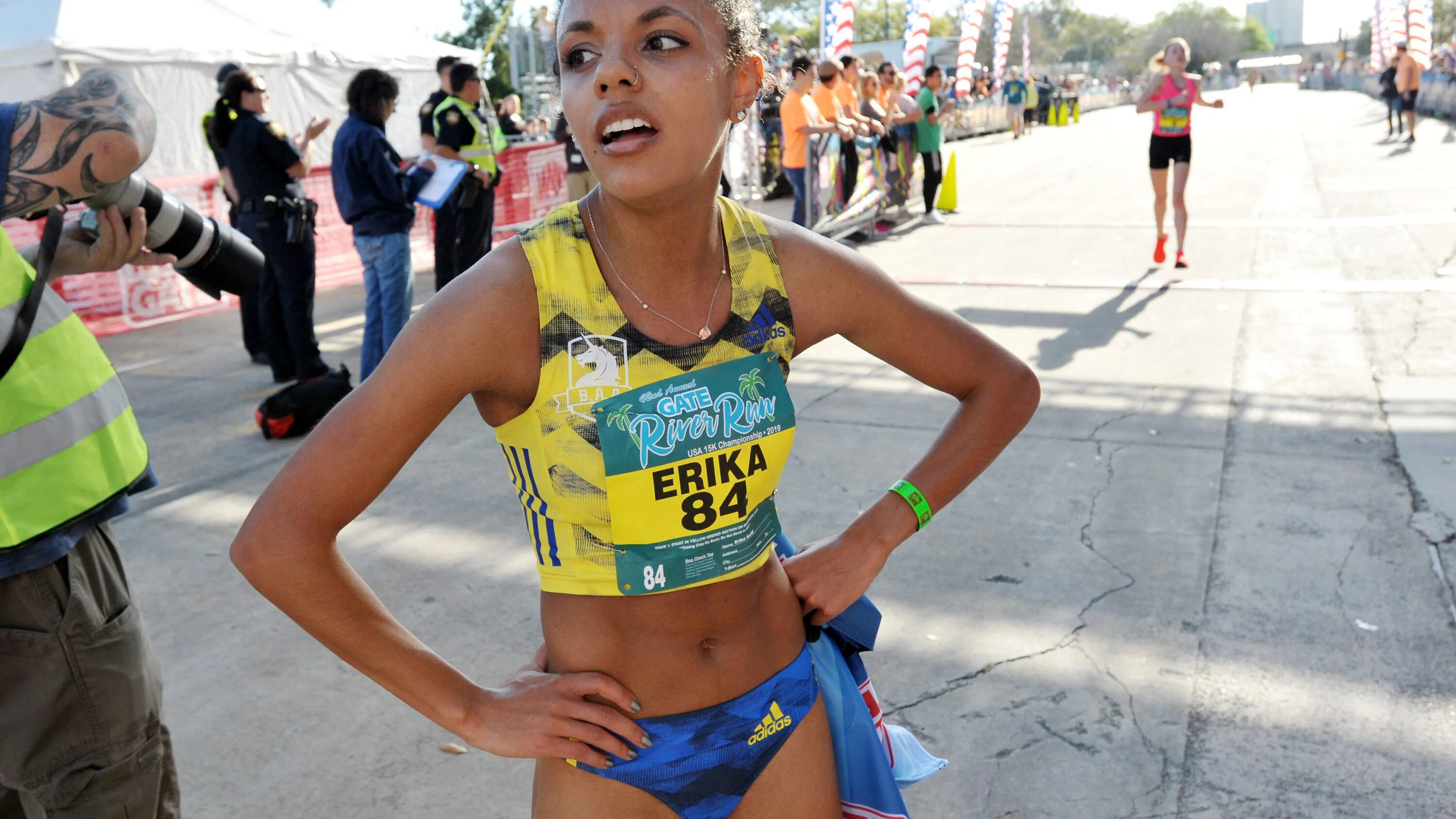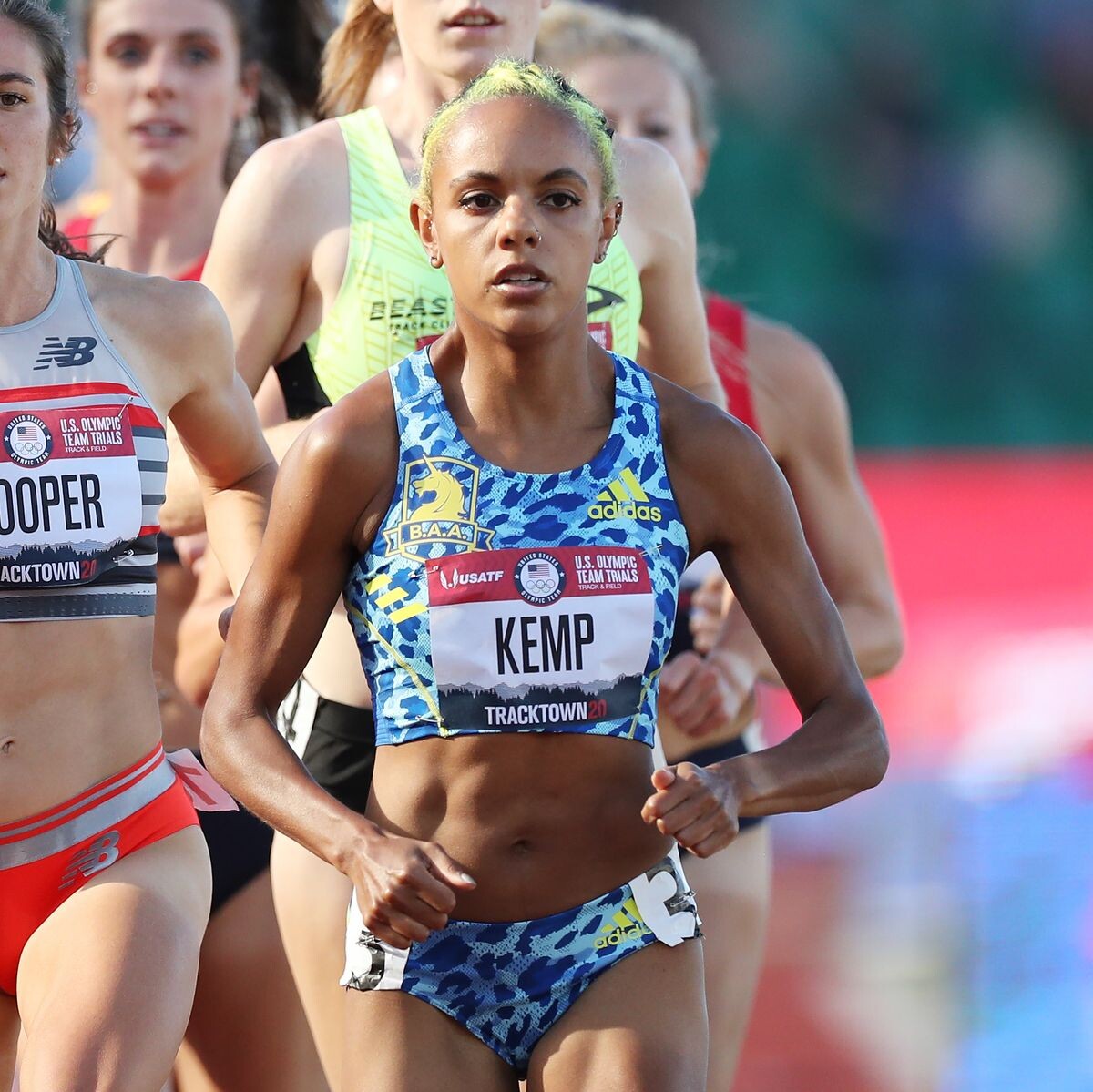Running News Daily
Running News Daily is edited by Bob Anderson. Send your news items to bob@mybestruns.com Advertising opportunities available. Train the Kenyan Way at KATA Kenya and Portugal owned and operated by Bob Anderson. Be sure to catch our movie A Long Run the movie KATA Running Camps and KATA Potato Farms - 31 now open in Kenya! https://kata.ke/
Index to Daily Posts · Sign Up For Updates · Run The World Feed
U.S. Champion Erika Kemp is set for Boston Marathon debut
Erika Kemp has lived in Boston since 2018, training with the Boston Athletic Association’s pro team. But she has never trained on the Boston Marathon course. Why would she? Most of her training was for track and road 5Ks and 10Ks and the occasional longer distance, like the U.S. 20K championships, which she won in 2021.
Now that Kemp’s making her marathon debut—at Boston—she and her new coach, Kurt Benninger, who is based in Providence, Rhode Island, figured it was time to put some long runs in on the road she’ll be racing in April. The plan on February 26 was for her to run 20 miles, the longest run she’s ever gone, starting at mile 3 of the course and getting through the Newton hills. It’s a straight shot—at least for most people.

But Kemp, 28, who admits she gets lost easily, was running on the right side of the road through the town of Wellesley when she inadvertently got off course. She ran onto Route 9, an unappealing stretch of road with office parks, car dealerships, and a 50-mile-per-hour speed limit. She didn’t realize she was on the wrong road until 6 miles later. By the time she got back to her home in Boston’s Allston neighborhood, she had exceeded 23 miles—and she never did see those Newton hills.
She put in a call to Benninger.

“I didn’t quite know how to tell him,” Kemp said. “It’s still a relatively new coaching relationship. How do I tell him I ran an extra 20 minutes and didn’t see the second half of the course I was supposed to see?”
Benninger, though, thought it was funny. So did Kemp. “He was super chill about it,” she said, and he told her, “Well, you got some extra volume. We’ll definitely go over directions more carefully next time.”
New beginnings
Early 2023 has brought many new roads for Kemp—some figurative, some literal. She decided not to re-sign with the B.A.A.’s High Performance Team at the end of last year. Now, in addition to the new race distance she’s trying, she has a new sponsorship deal with Brooks and a new training situation.
After Boston, she’ll move to Providence to be in person with Benninger’s group, which includes pros Marielle Hall, Helen Schlactenhaufen, and Brian Shrader (though the latter two train mainly in Boston). In addition, Benninger’s wife, Molly Huddle, who is coached by Ray Treacy, comes to a lot of their practices. Occasionally Emily Sisson, another Treacy athlete, will be in town. Kemp expects she’ll match up with Hall for most of her workouts.
It’s a big change from what she’s been doing, but Kemp felt like she needed it. She was a six-time All-American at North Carolina State University, and she improved on her college times at the B.A.A., running 15:10 for 5,000 meters on the track and 31:35 for 10,000. But she felt like she came up short at the biggest moments.
“I have yet to feel like I really have had that breakthrough race,” she said, “where all of my training and improvements have been reflected in a singular performance. I have had a lot of races the last couple of years where I got to the start line kind of fatigued. I don’t feel like it’s 100 percent reflective of how much I’ve improved.”
When she decided to leave the B.A.A., she didn’t have a training situation lined up for herself yet, and she was still talking to sponsors. So she got herself through the early days of marathon training by consulting with friends and a network of experienced marathoners, building up her mileage to 90 per week from the high 70s or low 80s she had been doing. It was a big jump for her, but she handled it well.
The only downside to marathon training is the constant hunger. Kemp is usually a sound sleeper, but she found herself waking up at 3 a.m. several nights in a row. Finally she realized she was hungry and started scarfing down a bowl of cereal. Then she’d go right back to sleep.
“You’re literally eating a bowl of cereal in the dark, and thinking, ‘What is my life right now?’” she said.
Whatever she was running—and eating—worked: In January, she finished seventh at the Houston Half Marathon in a PR of 1:10:14, averaging 5:22 per mile. With the performance, Kemp qualified for the 2024 Olympic Marathon Trials in Orlando, which she intends to run.
She said that Brooks felt like a natural fit as a sponsor, and the company didn’t mind if she wanted to stay on the East Coast instead of joining one of its two established training groups in Michigan or Seattle.
by Sarah Lorge
Login to leave a comment
Boston Marathon
Among the nation’s oldest athletic clubs, the B.A.A. was established in 1887, and, in 1896, more than half of the U.S. Olympic Team at the first modern games was composed of B.A.A. club members. The Olympic Games provided the inspiration for the first Boston Marathon, which culminated the B.A.A. Games on April 19, 1897. John J. McDermott emerged from a...
more...




